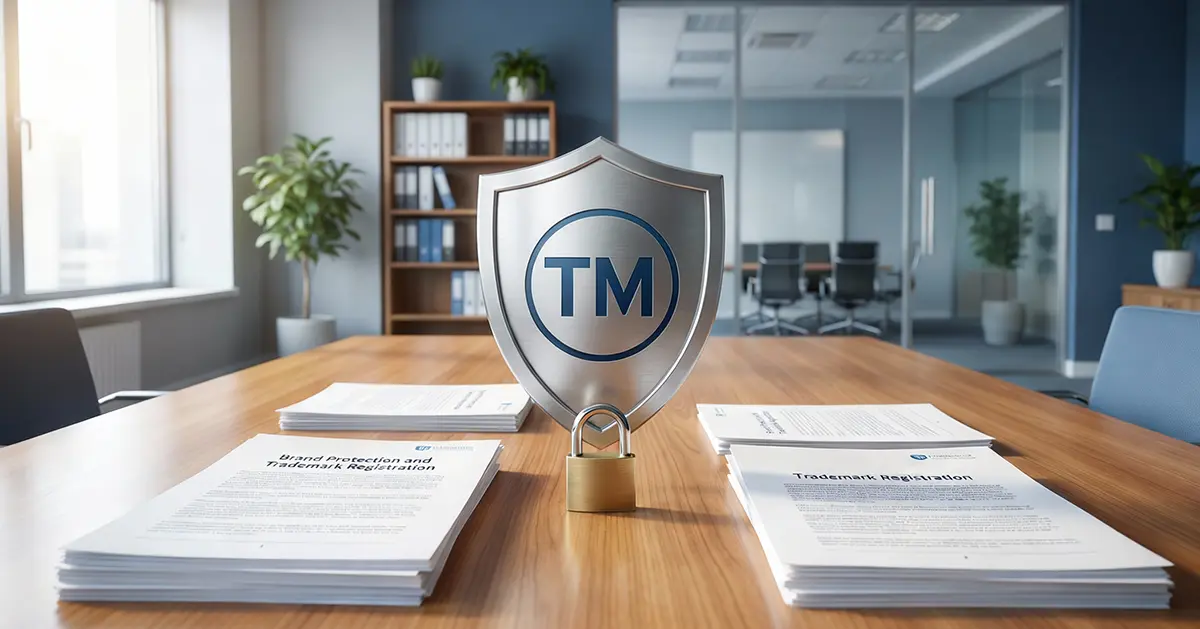
Intellectual property protection is a critical part of growing and sustaining a business, but understanding which protection fits your needs can be difficult. The debate of trademark vs patent is common, as both are widely recognized forms of protection, yet they serve very different roles. While trademarks protect your brand identity, patents safeguard your inventions. Both are essential for safeguarding your ideas and products, but they apply to distinct aspects of your business.
In this blog, we’ll break down the key differences between trademarks and patents, focusing on what each protects and when you should consider using them. Whether you’re developing a new product or building a brand, understanding these distinctions will help you make informed decisions about how to protect your intellectual property. Let’s take a closer look at how each of these legal tools works.
What is a Trademark?
A trademark identifies and distinguishes the source of goods or services originating from a company. Trademarks are essential for preserving brand identity in a crowded marketplace.
Definition and Purpose of Trademarks
A trademark is a recognizable sign, design, or expression that differentiates products or services of one business from those of others. The main purpose of trademarks is:
- Safeguarding Brand Identity: Trademarks protect names, logos, slogans, and symbols linked to a product or service. This safeguards a business’s reputation and prevents competitors from misusing their identity.
- Role in the Marketplace: Trademarks help customers identify trusted brands and foster consumer loyalty, ensuring repeat business.
Examples of Trademarks
Some well-known examples of trademarks include:
- The Nike “Swoosh” logo
- The McDonald’s “Golden Arches”
- Coca-Cola’s distinct cursive font and red packaging
Types of Trademarks
Different types of trademarks include:
- Word Marks: Coca-Cola
- Symbol Marks: Apple logo
- Taglines: Nike’s “Just Do It”
- Trade Dress: Specific visual aspects of a product (e.g., unique packaging)
Registration Process for Trademarks
- Conduct a trademark search to verify the uniqueness of your brand assets.
- File a trademark application with the Controller General of Patents, Designs, and Trademarks in India or an equivalent international body.
- Get approval post-examination, publication, and opposition period.
For businesses looking to secure their branding fully, platforms like RegisterKaro simplify the trademark registration process.
Benefits of Trademark Registration
- Brand Protection: Establishes ownership of your brand.
- Deterrence: Prevents unauthorized use by competitors.
- Legal Safeguards: Facilitates legal recourse in case of intellectual property infringement.
What is a Patent?
A patent grants exclusive rights to an inventor for a specific period. It prevents others from making, using, or selling the invention without the patent holder’s permission.
Definition and Purpose of Patents
Under the Patents Act, 1970, a patent refers to the legal protection granted for a novel invention. Its purpose includes:
- Protecting Innovation: Patents safeguard intellectual hard work and ingenuity behind an invention.
- Encouraging R&D: Patents incentivize innovators by ensuring a return on their investments.
Patent Examples
- Thomas Edison’s light bulb patent
- The patent for the iPhone touchscreen module
Types of Patents
- Utility Patents: For functional inventions (e.g., machines, systems).
- Design Patents: Pertaining to new designs of manufactured articles.
- Plant Patents: Created for new varieties of plants.
Patentability Criteria
To obtain this legal protection, an invention must meet specific conditions:
- It must be novel/unique.
- It should be industrializable.
- The invention should demonstrate an innovative step.
Patent Application Process
- Conduct a comprehensive patent search to ensure your idea’s originality.
- Prepare the patent specification: provisional, complete, or international.
- File your application with the Indian Patent Office or relevant authority globally.
Seeking professional help through services like RegisterKaro ensures a smooth and hassle-free patent filing experience.
Difference Between Patent and Trademark
Understanding the difference between patent and trademark is crucial for securing your intellectual property properly.
| Aspect | Trademark | Patent |
| Purpose | Protects brand identity | Safeguards inventions and innovations |
| Protection Scope | Names, logos, symbols, taglines, trade dress | New products, processes, or technologies |
| Legal Basis | Trademarks Act, 1999 (India) | Patents Act, 1970 (India) |
| Duration | 10 years (renewable indefinitely) | 20 years (non-renewable post expiration) |
| Examples | Nike Swoosh, McDonald’s Golden Arches | Antibiotics formula, artificial satellites |
Understanding the patent and trademark difference ensures that businesses engage the right protection mechanism for their work.
Legal Framework Governing Trademarks and Patents
Indian Laws Governing Patents
- Provisions of the Patents Act, 1970: Defines the components of patent protection.
- Indian Patent Office (IPO): The central authority managing patent applications.
- Filing Patents in India: Ensures compliance with territorial rules under IPO.
- Enforcement Mechanisms: Addressing infringement through IP courts.
Indian Laws Governing Trademarks
- Provisions of the Trademarks Act, 1999: Covers trademark protection and filing.
- Role of the Controller General: Implements trademark regulations.
- Registration Process: Involves trademark searches, application filing, and publication.
- Enforcement Mechanisms: Provides legal recourse for IP violations.
Why Businesses Need Both Trademarks and Patents
Securing Brand Identity with Trademarks
Trademarks empower companies by securing their visual identity, fostering brand loyalty, and ensuring market recognition.
Protecting Innovation with Patents
Patents shield businesses from unfair competition by safeguarding innovative solutions, stimulating growth.
Why Use Both Trademarks and Patents?
- Product Innovation and Branding: Protect your innovation while simultaneously marketing it.
- Market Exclusivity: Gain a competitive edge by securing ownership rights for both branding and technology.
- Business Growth: Build value and credibility for a company’s IP portfolio.
Conclusion
Both trademarks and patents are powerful tools for safeguarding intellectual property. While a trademark protects a brand’s name and logo, a patent secures technological innovations. By understanding their specific roles, businesses can effectively use both mechanisms for long-term success. Now that you’ve explored the essential aspects of trademark vs patent, you can make informed IP protection decisions for your business.
Need help with trademark or patent registration in India? Let RegisterKaro guide you through the process with ease and expertise! Protect your brand and innovation today.
FAQs
1. Can one business register both trademark and patent?
Yes, businesses often register both, as trademarks protect their branding while patents secure unique inventions.
2. How long does it take to register a trademark or patent?
Trademark registration typically takes 6-12 months. Patent approval may take years, depending on its complexity.
3. Are trademarks or patents valid internationally?
Trademarks and patents filed in India are territorial. For global protection, apply under the Madrid Protocol (trademark) or PCT (patent).
For more details, check the official website of the Indian Patent Office or consult a trusted IP service provider.




